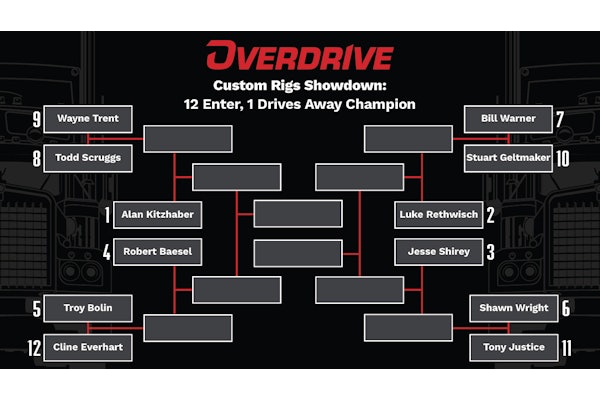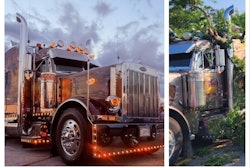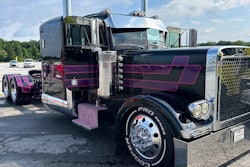Bigger tractor-trailers may have some advantages, but what’s in it for you?
Dueling proposals concerning heavier tractor-trailer combos on federal highways were introduced in the U.S. House in March, rekindling long-running debates over truck safety, aging infrastructure and growing congestion.
What you don’t hear in the arguments is how this will affect drivers, because ultimately the issue is more about competition than the pros and cons being bantered about.
H.R. 1799, or the Safe and Efficient Transportation Act of 2009, would allow tractor-trailer combinations to weigh up to 97,000 pounds on the National Highway System with the addition of an extra axle on the trailer. The bill is endorsed by the American Trucking Associations and shipper organizations.
Introduced prior to the above bill, which did not amend trailer lengths, H.R. 1618, or the Safe Highways and Infrastructure Preservation Act, would limit trailer length on the National Highway System and extend those limits to other roads as well. It would prevent states from enacting new laws to allow trailers longer than 53 feet. Tractor-trailer maximum weight would remain at the current 80,000-pound limit. It has the support of the Truckload Carriers Association, the Owner-Operator Independent Drivers Association and so-called safety advocates.

H.R. 1799 would increase efficiency and reduce emissions, congestion, truck crashes and road maintenance, according to its supporters.
Those who support the status quo bill argue that increasing the weight capacity of tractor-trailers would compromise safety and have a negative effect on the nation’s infrastructure.
Theoretically, increasing weight (and/or length) could improve efficiency and congestion if you reduce the number of trucks needed to carry freight. But that also would mean the need for fewer drivers. (Of course, this scenario involves dense freight. It is not taking into account a large amount of shipped freight that cubes out before it maxes out in weight.)
On the safety and infrastructure arguments, both sides present different viewpoints. The extra axle means “two more brakes,” ATA said in a press release, “preventing an increase in stopping distances, and avoids additional pavement damage.”
Stability, mobility and maneuverability are substantially reduced on bigger and heavier trucks, claims OOIDA. The organization, which represents owner-operators, also counters that heavier trucks put more stress on highways and bridges.
The bottom line: Increasing the weight of trucks would have positive benefits for carriers that can afford equipment upgrades. But struggling carriers or those without the means to upgrade could be at a disadvantage because of the downward pressure by shippers to haul more weight.
And for drivers, there doesn’t seem to be an upside. If weight limits increase, there is no guarantee that drivers will see more money. That’s because most drivers are paid by the mile, making freight weight a moot issue.
What is guaranteed is more stress for the driver, who has the greater liability hauling heavier loads. For that reason alone, the driver should be compensated at a higher rate.
For a regulation change that could impact many drivers, ironically, their role hasn’t been given much weight in the matter.
Truckers News Gets New Look, More Features
No doubt you’ve noticed this issue of Truckers News looks and feels different.
We’ve adopted a new size and redesigned our editorial departments. Our goal is to give readers more, not less.
We’ve added several new features. First, we’ve brought back “How to Become an Owner-Operator.” This feature will help educate company drivers on taking the proper steps to become successful independent contractors. Second, we’ve created “Buyer’s Guide.” In addition to covering new products, with this section we’ll highlight a specific product category.
Also, we are providing more in-depth and analytical news coverage of industry issues that affect truck drivers.
Some of our regular departments, including “Big Rig Basics” and “Smart Driving”, have been revamped. “Big Rig Basics” is now more visual to help the reader understand basic how-to maintenance and repairs. Smart Driving offers more practical driver application information for newbies, as well as a refresher course for veteran drivers.
Reader involvement has always been an important part of our magazine. Our “Feedback” page now includes more than letters to the editor with the addition of polls and truckers’ views on news and lifestyle issues. Tweeters can turn to TN’s Twitter page (see “Sound Off” infobox on this page) to send us quick responses to something they’ve read in our magazine.
Realizing many drivers are computer gurus, we’ve created special web content including editors’ blogs, exclusive stories and Truckers News’ Flickr site, where truckers upload images of their trucks and scenes from the road. You can find a complete listing of these features on our “Online TOC” page.
We hope you like the new look and our many additions. We’ll be waiting to hear back from you soon.











